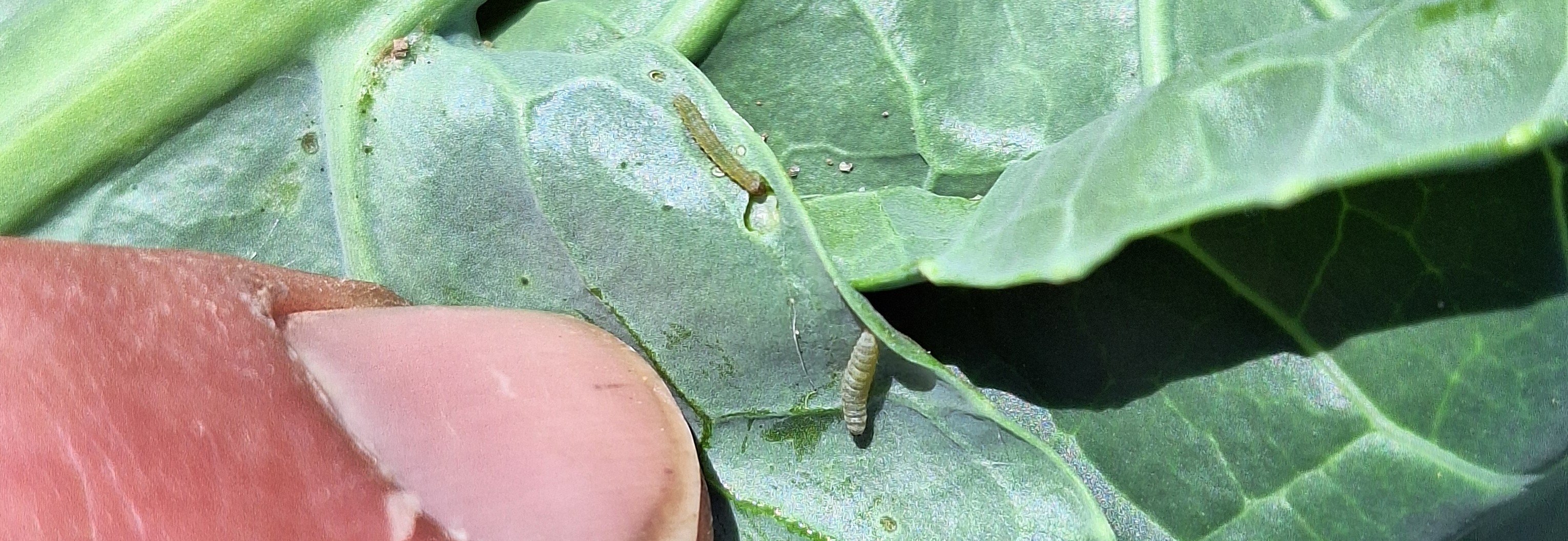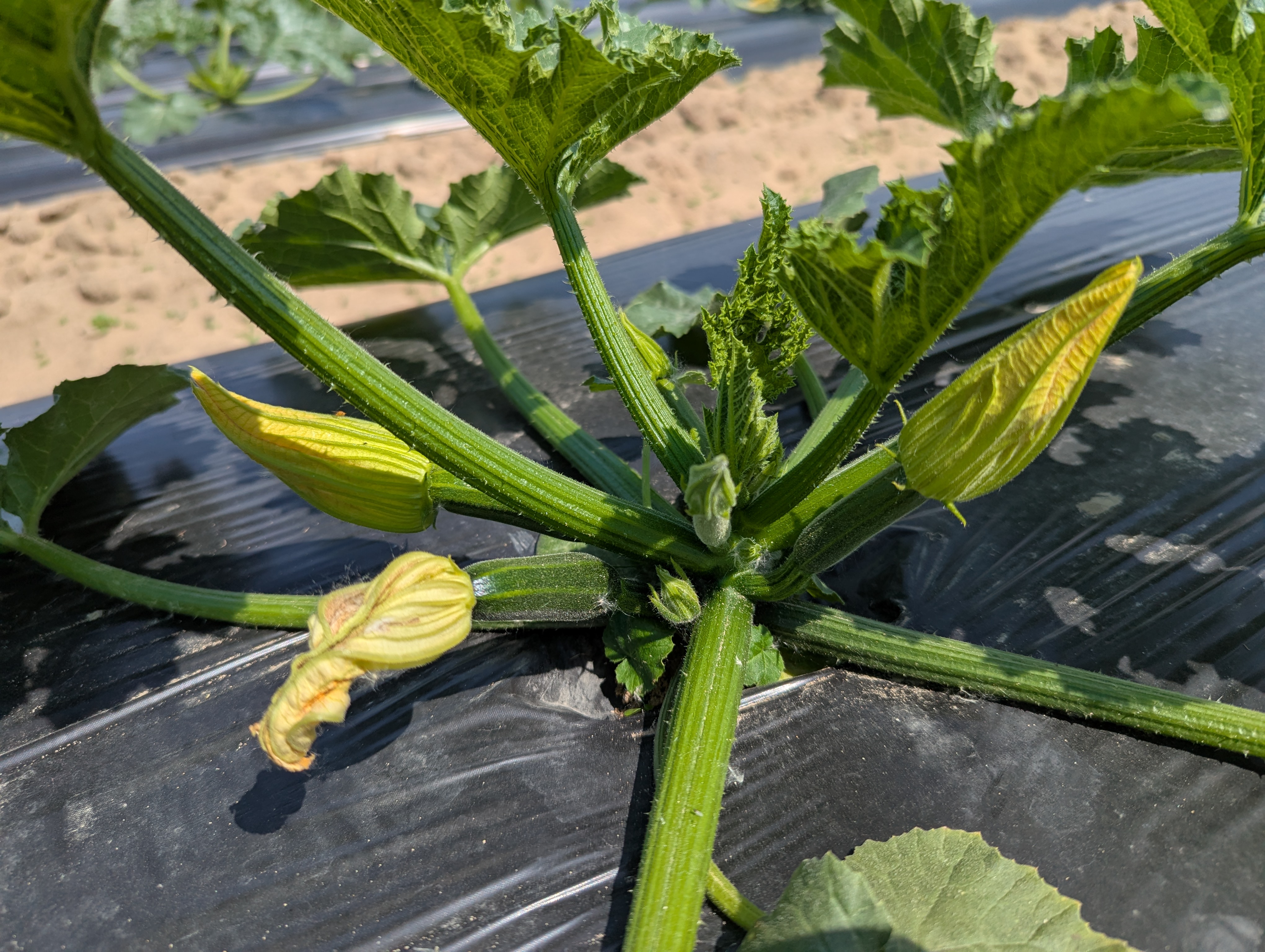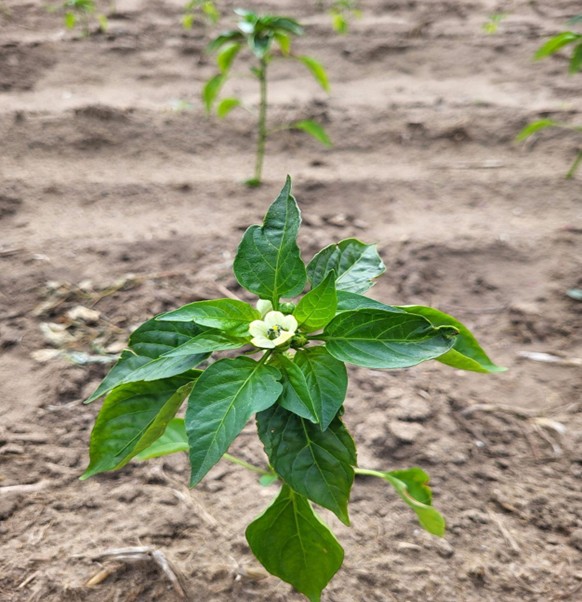Michigan vegetable crop report – June 18, 2025
Rain, storm and heat may take a toll on vegetables in the days ahead.

Weather
The past week saw temperatures 2-4 degrees Fahrenheit below normal and cooler in the western side of Michigan. The northern Lower and Upper Peninsula saw decent rain but less fell elsewhere. Soil moisture in the top 3 feet is low, especially in the east-central Lower Peninsula. Degree day totals are below normal for the northern Lower and Upper Peninsula and near normal for the southern Lower Peninsula. Precipitation totals of 2 inches, plus or minus, are expected through next Wednesday.
This week’s forecast calls for:
- Showers and thundershowers likely central, south Wednesday through Wednesday evening. Severe storms possible south Wednesday evening. Cloudy and cooler Thursday. Scattered showers possible north Friday and Saturday. Fair, dry and hot Sunday and Monday with rain possible again Tuesday next week.
- High temperatures from the mid-70s north to mid-80s north Wednesday, cooling to the 70s Thursday, then warming to the upper 80s to mid-90s this weekend into early next week. Lows from the mid-50s north to mid-60s south Wednesday, warming into the 60s to low 70s by this weekend.
- Medium range outlooks call for an active storm track across the regions, with above normal temperatures and rainfall.
MSU bulletin on fertilizer planning
Michigan State University Extension has recently released a new bulletin, “Introduction to Fertilizer Planning: Vegetable Edition,” as part of the DEMaND series. This resource goes into detail on soil chemistry, types of fertilizers, the economics of using fertilizer and more. Beginning farmers especially will take a lot away from this comprehensive guide on fertilizer planning in vegetables.
Crop updates
Asparagus
High dewpoints and warm temperatures mean it will be good to put a cover of fungicide on ferned out plantings if that has not been done recently.
Herbicide drift is always a risk when shutting down a full-season field that is adjacent to a younger, ferned out planting. Here are a few tips from a presentation Jason Deveau of the Ontario Ministry of Agriculture, Food and Rural Affairs gave several years ago:
- Keep booms low and go slow.
- Use the coarsest nozzle possible given the product you need to apply.
- A little bit of wind is good: Inversions tend to form after sunset and dissipate after sunrise once a light breeze picks up.
There are two kinds of drift: particle drift and vapor drift. Particle drift is when droplets are carried away by the wind; it’s what we are most used to and occurs over feet. It creates patterns that make sense: injury on the side of the field downwind from the application site. Cooler, humid and/or windy conditions favor particle drift (slow drying times and/or wind to pick up the product). Vapor drift happens when volatile herbicides are picked up and can happen over miles. Hot and/or less humid conditions that evaporate the water in the droplet favor this type of drift. 2,4-D and dicamba are herbicides that can volatilize. There is a formulation of 2,4-D called Embed Extra that may help to some degree, and using a bit more water volume and coarse droplets can also help.
Brassicas and greens
Harvests are set to begin soon of early broccoli on black plastic, and the heat coming will likely push things along quickly, with the potential for some heat-related stress symptoms. Various spring planted brassicas are being harvested, including kale, kohlrabi, mustard greens, radishes, as well as head and leaf lettuce. Caterpillar feeding is a perennial issue in cole crops. Check out this Michigan State University (MSU) Extension bulletin, “Caterpillar Pests in Cole Crops,” for a refresher on some of the main culprits.

Diamondback moth caterpillars have been out and about already in west central Michigan. Bt products can be effective, especially on smaller larvae-and have the side benefit of conserving beneficial insects that can help control aphids and caterpillars. Make sure to use a spreader-sticker and be aware Bt products may need to be applied more frequently compared to synthetic insecticides. Pyrethroids are affordable and may be effective in some areas, but resistance may be present in some populations. They are relatively toxic to beneficials. Products containing chlorantraniliprole (e.g., Coragen) and spinetoram (e.g., Radiant) are effective. These are relatively soft on beneficials, though Besiege also contains a pyrethroid. Entrust (active ingredient spinosad) is another effective organic option.

Carrots and celery
Infectivity continues to be elevated in aster leafhopper samples from carrots and celery. Sign up for texts to get an idea of aster yellows infection risk.
Infectivity—the percentage of leafhoppers carrying aster yellows—is a key piece of information that can help prioritize your time. The texts also come along with thresholds. These are reported as the number of leafhoppers per 100 sweeps. Paired with good scouting data, they can help growers prioritize tasks.
Now for a brief leafhopper scouting primer. The sweep net is the key tool of the trade. With net in hand, take a decided-on number of sweeps in a few spots across different parts of the field. In the example in Table 1, MSU Extension took 20 sweeps in five locations for a total 30 leafhoppers per 100 sweeps. The most recent threshold for that county was four leafhoppers per 100 sweeps, so it made sense to prioritize application of an insecticide like Asana. Note that the thresholds are not absolutes, but if numbers are well below or above them, they can be informative.
Table 1. Example leafhopper numbers from a recent carrot scouting trip. Twenty sweeps were taken in five locations across the field.
|
Location in field |
# leafhoppers |
# of sweeps |
|---|---|---|
|
1 |
2 |
20 |
|
2 |
7 |
20 |
|
3 |
10 |
20 |
|
4 |
7 |
20 |
|
5 |
4 |
20 |
|
TOTAL |
30 |
100 |

Cucurbits
Cucumbers, summer squash and melons are still being transplanted/seeded outside. The first squash blossoms of the season were blooming over the last week. Sometimes these are just female flowers, but this can be temperature and variety dependent. In some varieties, these early females make viable “seedless” fruit, but other varieties will abort these unfertilized fruit. It takes a few days to figure out, and some growers pick these off to concentrate the plants’ energy on more growth.

Wind and sandblasting damage are being observed on some young transplants. Pumpkins and winter squash are being planted and some have already emerged. Cucumber beetles are being reported. These are among the most devastating insect pests of cucurbits if present in large numbers. This recent article from Ohio State University mentions some of the considerations around scouting and control.
If we get heavy rains, keep an eye out for symptoms of Phytophthora capsici in fields with a history of this disease. Growers used to battling this disease sometimes have a small disk ready to disk up symptomatic plants (plus a healthy firewall) to limit spread. This is a key part of the all-in approach it takes to live with this disease.
Check the MSU Downy Mildew News website for updates on spore trap results and current downy mildew news.
Fruiting vegetables
Field plantings of tomatoes and peppers are beginning to flower. Trellis stakes are going in, and some growers have their first weaves tied. Once the stakes are up, mechanical cultivation becomes more difficult with tractors. Some specialized machines exist, but many growers use a hooded sprayer to clean up emerged weeds between the plastic, mixed with a preemergent labeled for the crop.

Onions and garlic
Garlic scapes are still coming in for some varieties, and stalks are getting thick. Some early fresh garlic is being harvested in the eastern part of the state.
Onions are advancing and the current weather pattern includes high dewpoints and warm temperatures. Some growers of transplanted onions had already applied fungicides. Some west central and eastern Michigan farms with direct sown onions were getting Luna Tranquility (FRAC 7/9) or Miravis Prime (FRAC 7/12) on hand to protect onions. Rotational partners that are not FRAC 7 could include Tilt (propiconazole, FRAC 3) and Omega (fluazinam, FRAC 29). Tank mixing site-specific fungicides with chlorothalonil can be part of a resistance management plan. Note that mancozeb and azoxystrobin did not provide protection against Stemphylium in trials. Read last week’s report for more information.
Sweet corn
Sweet corn successions are being continuously planted.
Now is a good time to put corn earworm traps out in plantings where silking is on the horizon. For more information, read “Video tutorials on using pheromone traps to monitor corn ear worm in sweet corn” by MSU Extension. Silking happens fairly soon in the days after tassels emerge.
It is also a good time to bookmark links that can help you see what’s coming. Purdue University and Ohio State University maintain a trapping network so you can see what’s brewing to our south. The Insect Forecast website uses weather data to predict when conditions are ideal for transport of moths from south to north
Where are we at now? Corn earworm has been captured in Indiana and Ohio trapping sites in low numbers, with the exception of a few southern trapping sites. Insectforecast.com has predicted low but almost daily risks of migration starting this past Sunday through tomorrow.
Root crops
Potatoes are beginning to flower.
Strawberries
Strawberries are hitting the markets. With the rain and heat, more are expected this and next week.
Produce Food Safety On-Farm Readiness Reviews
Schedule an On-Farm Readiness Review today for a two-hour educational visit that takes place during the harvest season and is meant to be casual and low stress. Everything discussed during an On-Farm Readiness Review is confidential and focuses on ways to reduce risks in relation to produce safety. There is no pressure to take our advice either, we are just here to support you in your produce safety efforts.
On-farm soil moisture monitoring research opportunity
MSU researchers are looking for 10 farms to install soil moisture probes in up to two fields. Cooperators get access to real-time data for both monitoring stations for three growing seasons (fall 2025-fall 2028). Refer to the flier for more details.
Reach out to Alex Kuhl (kuhlalex@msu.edu) if you might be interested or have questions.
Events
- June 19, 7-8 a.m., Field Crops Virtual Breakfast Series: Legacy Phosphorus: The Hidden Driver of Drainage Loss (CCA only)
- June 19, 5:30-8:30 p.m., Pollinator Workshop for Beginning Farmers
- June 24, 9 a.m.-12:30 p.m., No-Till Pumpkin & Cover Crop Field Day
- June 26, 5:30-8:30 p.m., Farm Financial Management Workshop for Beginning Farmers
- July 16 - 8:30 a.m.-12 p.m., Scouting School 2025 (Day 3)
- July 30, Edible Flint Food Garden Tour
- August 5, 12-1 p.m., Seed Treatment Webinar Series
- August 12, 12-1 p.m., Seed Treatment Webinar Series
- August 18 – 19, Northern Michigan Small Farm Conference
- August 19, 12-1 p.m., Seed Treatment Webinar Series
- August 20, 10 a.m.-2 p.m., Organic Vegetable Pest Management Field Day
- August 26, 12-1 p.m., Seed Treatment Webinar Series
This work is supported by the Crop Protection and Pest Management Program [grant no 2024-70006-43569] from the USDA National Institute of Food and Agriculture. Any opinions, findings, conclusions, or recommendations expressed in this publication are those of the author(s) and do not necessarily reflect the view of the U.S. Department of Agriculture.



 Print
Print Email
Email

